Your search “Keep%20the%20death%20penalty%abolished%20in%20the%20ePhilippfines%20e%20e%20e%20e%20e%20e%20e%20e%20e%20e/page/www.deathpenalty.org/downloads/RadeletDeterrenceStudy20e09.pdf ”
Document(s)
Death Penalty Lessons from Asia
By David T. Johnson / Franklin E. Zimring / Asia-Pacific Journal, on 1 January 2009
2009
Article
China
More details See the document
Part one of this article summarizes death penalty policy and practice in the region that accounts for 60 percent of the world’s population and more than 90 percent of the world’s executions. The lessons from Asia are then organized into three parts. Part two describes features of death penalty policy in Asia that are consistent with the experiences recorded in Europe and with the theories developed to explain Western changes. Part three identifies some of the most significant diversities within the Asian region – in rates of execution, trends over time, and patterns of change – that contrast with the recent history of capital punishment in non-Asian locations and therefore challenge conventional interpretations of death penalty policy and change. Part four discusses three ways that the politics of capital punishment in Asia are distinctive: the limited role of international standards and transnational influences in most Asian jurisdictions; the presence of single-party domination in several Asian political systems; and the persistence of communist versions of capital punishment in the Asia region.
- Document type Article
- Countries list China
- Themes list Death Penalty,
Document(s)
Akmal Shaikh
By Reprieve, on 1 January 2009
Legal Representation
More details See the document
It was during this time Akmal met a man who claimed to be in the music industry; he told Akmal he could help him realise his dream of becoming a pop, When Akmal landed in China on 12 September 2007 the police stopped him, searched his bag, where they alleged they found around 4 kg of heroin, and arrested him on drug charges sensation and sent him to Kyrgyzstan to meet with his “colleagues”. In Kyrgyzstan Akmal was asked to accompany one of the men to China. The man claimed to own a nightclub there and said he wanted Akmal to sing in his club. Excited at the prospect, Akmal agreed to travel to China with him; Before boarding the plane Akmal was asked to carry this mans suitcase, he did so without knowing that there were drugs in it.
- Document type Legal Representation
- Themes list Networks,
Document(s)
The Political Sociology of the Death Penalty: A Pooled Time-Series Analysis
By Jason T. Carmichael / David Jacobs / American Sociological Review, on 1 January 2002
2002
Article
United States
More details See the document
Despite the interest in the death penalty, no statistical studies have isolated the social and political forces that account for the legality of this punishment. Racial or ethnic threat theories suggest that the death penalty will more likely be legal in jurisdictions with relatively large black or Hispanic populations. Economic threat explanations suggest that this punishment will be present in unequal areas. Jurisdictions with a more conservative public or a stronger law and order Republican party should be more likely to legalize the death penalty as well. After controlling for social disorganization, region, period, and voilent crime, panel analyses suggest that minority presence and economic inequality enhance the likelihood of a legal death penalty. Conservative values and Republican strength in the legislature have equivalent effects; A supplement time-to-event analysis supports these conclusions. The results suggest that a political approach has explanatory power because threat effects expressed through politics and effects that are directly political invariable account for decisions about the legality of capital punishment.
- Document type Article
- Countries list United States
- Themes list Networks,
Document(s)
Public Opinion on the Death Penalty
By Cornell Law School, on 1 January 2018
2018
Article
More details See the document
Public officials in retentionist or de facto abolitionist countries often invoke public support for the death penalty as one of the reasons why they do not promote abolition. A closer look at this justification, however, reveals some common flaws. This note offers a critical assessment of public opinion polls on the death penalty and suggests tools to properly gauge the level of public support for the death penalty.
- Document type Article
- Themes list Public opinion, Public debate, Death Penalty,
Document(s)
Death isn’t Justice
By Poster for Tomorrow, on 8 September 2020
2020
Academic report
More details See the document
Poster for tomorrow is an independent, non-profit international project whose goal is to encourage people, both in and outside the design community, to make posters to stimulate debate on issues that affect us all.
- Document type Academic report
- Themes list Networks,
Document(s)
Compensating the Wrongfully Convicted
By The Innocence Project, on 1 January 2012
2012
Working with...
More details See the document
Those proven to have been wrongfully convicted through postconviction DNA testing spend, on average, 12 years behind bars. The agony of prison life and the complete loss of freedom are only compounded by the feelings of what might have been, but for the wrongful conviction. Deprived for years of family and friends and the ability to establish oneself professionally, the nightmare does not end upon release. With no money, housing, transportation, health services or insurance, and a criminal record that is rarely cleared despite innocence, the punishment lingers long after innocence has been proven. States have a responsibility to restore the lives of the wrongfully convicted to the best of their abilities. This document describes how a state can try to recompensate an exonerated person.
- Document type Working with...
- Themes list Networks,
Document(s)
The Peculiar Forms of American Capital Punishment
By David Garland / Social Research: An International Quarterly, on 1 January 2007
2007
Article
United States
More details See the document
There are two puzzles that confront observers of American capital punishment at the start of the 21st century. One concerns the legal and administrative arrangements through which it is enacted, which strike many commentators as irrational, or at least poorly adapted to the traditional ends of criminal justice. The other concerns the persistence of capital punishment in the USA in a period when comparable nations have decisively abandoned its use. In this essay, I will address both of these two questions, beginning with the first and offering conclusions that bear upon the second.The historical struggles around issues of capital punishment, structured as they have been by the American polity with its distinctive mix of federalism, sectionalism, and democratic populism, form the necessary basis for understanding the American present and for comparing America’s current practices with those of other western nations. Any explanation of American capital punishment ought to begin by focusing attention on these structures and these struggles.
- Document type Article
- Countries list United States
- Themes list Networks,
Document(s)
The death penalty in China today: Kill fewer, kill cautiously
By Susan Trevaskes / Asian Survey, on 1 January 2008
2008
Article
China
More details See the document
While the PRC death penalty debate has been an ongoing and highly contentious issue in the international human rights arena, death sentence policy and practice in China has remained relatively static since the early 1980s. Events in late 2006 and early 2007 have now dramatically changed the landscape of capital punishment in China. This paper analyses the recent debate on the death penalty in terms of the shifting power relationships in China today. The Supreme People’s Court wants to strictly limit the death penalty to only the ‘most heinous’ criminals while the politburo on the other hand, wants to maintain the two-decade old ‘strike hard’ policy which encourages severe punishment to be meted out to a wider range of serious criminals.
- Document type Article
- Countries list China
- Themes list Public debate,
Document(s)
Courtroom Contortions: How America’s application of the death penalty erodes the principle of equal justice under law
By Anthony G. Amsterdam / American Prospect, on 8 September 2020
2020
Article
United States
More details See the document
One cost this country pays for the death penalty is that its courts are constantly compelled to corrupt the law in order to uphold death sentences. That corruption soils the character of the United States as a nation dedicated to equal justice under law.This is not the only price we pay for being one of the very few democracies in the world that retains capital punishment in the 21st century. But it is a significant item on the cost side of the cost-benefit ledger, something that each thinking person ought to balance in deciding whether he or she supports capital punishment. And it warrants discussion because this cost is little understood. I have spent much of my time for the past 40 years representing death-sentenced inmates in appeals at every level of the state and federal judicial systems, and I am only lately coming to realize how large a tax the death penalty imposes on the quality of justice in those systems.
- Document type Article
- Countries list United States
- Themes list Networks,
Document(s)
Factsheet – Death Penalty Abolition
By European Court of Human Rights, on 8 September 2020
United Nations report
More details See the document
Court’s case-law and pending cases on abolition of the death penalty. It deals with death-row phenomenon – the risk of being stoned to death / of being sentended to death and the death penalty as result of unfair trial.
- Document type United Nations report
- Themes list Death Row Phenomenon, Stoning, Death Penalty,
Document(s)
The Death Penalty for Drug Offences: Global Overview 2017
By Harm Reduction International / Gen Sander, on 1 January 2018
2018
NGO report
More details See the document
The year 2017 marks 10 years since Harm Reduction International launched its Death Penalty for Drugs project. This report looks at the death penalty for drugs in law and practice and considers critical developments on the issue.
- Document type NGO report
- Themes list Drug Offences, Death Penalty,
Document(s)
Death Penalty in India: Annual Statistics Report 2017
By NLU Delhi , on 1 January 2017
2017
NGO report
More details See the document
- Document type NGO report
- Themes list Death Row Conditions, Legal Representation, Death Penalty, Statistics,
Document(s)
The Death Penalty for Drug Offences: Global Overview 2010
By Rick Lines / Patrick Gallahue / Harm Reduction International, on 1 January 2010
2010
NGO report
More details See the document
The report is the first detailed country by country overview of the death penalty for drugs, monitoring both national legislation and state practice of enforcement. Of the states worldwide that retain the death penalty, 32 jurisdictions maintain laws that prescribe the death penalty for drug offences. The study also found that in some states, drug offenders make up a significant portion – if not the outright majority – of those sentenced to death and/or executed each year.
- Document type NGO report
- Themes list Drug Offences,
Document(s)
Japanese : 死刑制度問題に関する提言
By Japan Federation of Bar Associations, on 8 September 2020
2020
NGO report
Japan
enMore details See the document
国連の国際人権(自由権)規約は、第6 条6 項において、「この条のいかなる規定も、この規約の締約国により死刑の廃止を遅らせ又は妨げるために援用されてはならない」として、死刑廃止の方向性を確認していたが、1989 年、国連総会において国際人権(自由権)規約第二選択議定書、いわゆる「死刑廃止条約」(以下、「死刑廃止条約」という。)が採択され(1991 年発効)、死刑の廃止が明確化された。日本は米国・中国などと共に同条約に反対し、今日に至るまで批准していない(注1)。また、国際人権(自由権)規約人権委員会は、1993 年11 月4 日、第3 回の日本政府報告書の審査にあたり、日本政府に対し、死刑廃止に向けた措置をとること、および死刑確定者のおかれた拘禁状態が規約に違反するとして、これを改善することを勧告している。しかし、その後も日本において前記勧告を受けての改善は一切なされず、同委員会は1998 年11 月6 日に再度、日本政府に対し、死刑の廃止および死刑確定者処遇の改善を勧告した。
- Document type NGO report
- Countries list Japan
- Themes list Networks,
- Available languages Recommendations on the Capital Punishment System
Document(s)
The Death Penalty for Drug Offences: Global Overview 2018
By Harm Reduction International / Giada Girelli, on 1 January 2019
2019
NGO report
More details See the document
Harm Reduction International has monitored use of the death penalty for drug offences worldwide since its first ground-breaking publication on this issue in 2007. This eighth report on the subject, continues its work of providing regular updates on legislative and practical developments related to the use of capital punishment for drug offences, a practice which is a clear violation of international human rights law.
- Document type NGO report
- Themes list Drug Offences, World Coalition Against the Death Penalty, Death Penalty,
Document(s)
German : Der Gerichtshof in 50 Fragen
By Council of Europe, on 8 September 2020
2020
Academic report
enenfrMore details See the document
Die Konvention unterscheidet zwischen zwei Beschwerdeformen: Individualbeschwerden, die von jeder natürlichen oder juristischen Person, Personenvereinigung oder nichtstaatlichen Organisation mit der Behauptung einer Verletzung der Konventionsrechte erhoben werden können, und Staatenbeschwerden, die von einem Konventionsstaat gegen einen anderen Konventionsstaat angestrengt werden.
- Document type Academic report
- Themes list Networks,
- Available languages Ukrainian : ЄСПЛ у 50-ти запитанняхThe ECHR in 50 questionsLe CEDH en 50 questions
Document(s)
Japanese : 21世紀 日本に死刑は必要か?死刑執行停止法の制定を求めて
By Japan Federation of Bar Associations, on 8 September 2020
NGO report
Japan
More details See the document
賛否が分かれる死刑制度2006年9月現在、死刑制度を維持している国は、世界で68か国です。死刑制度に賛成の立場からは、人の生命を奪った者が自らの生命を奪われるのは当然である、という応報的な考え方や、愛する者を奪われた被害者遺族の感情を考えれば死刑は必要である、死刑の威嚇によって犯罪を抑止することができる、などが死刑制度を維持すべき理由として挙げられています。一方、死刑を廃止している国は129か国。死刑制度に反対の立場からは、人権保障の観点から、たとえ国家であっても生命という究極の価値を奪うことは許されない、死刑は残虐で非人道的な刑罰である、とする考えや、誤判による死刑のおそれがあること、死刑に犯罪抑止の効果は実証されていないこと、などが挙げられています。
- Document type NGO report
- Countries list Japan
- Themes list Networks,
Document(s)
Italian : Convenzione per la salvaguardia dei Diritti dell’Uomo e delle Libertà fondamentali
By Council of Europe, on 8 September 2020
United Nations report
enenrufrMore details See the document
Articolo 2 – Diritto alla vita1 Il diritto alla vita di ogni persona è protetto dalla legge. Nessuno può essere intenzionalmente privato della vita, salvo che in esecuzione di una sentenza capi-tale pronunciata da un tribunale, nel ca-so in cui il reato sia punito dalla legge con tale pena.
- Document type United Nations report
- Themes list International law, Right to life,
- Available languages German : Konvention zum Schutze der Menschenrechte und GrundfreiheitenConvention for the Protection of Human Rights and Fundamental FreedomsКонвенция о защите прав человека и основных свободConvention de sauvegarde des Droits de l'Homme et des Libertés fondamentales
Document(s)
German : Konvention zum Schutze der Menschenrechte und Grundfreiheiten
By Council of Europe, on 8 September 2020
United Nations report
enenrufrMore details See the document
Artikel 2 – Recht auf Leben1 Das Recht jedes Menschen auf Le-ben wird gesetzlich geschützt. Niemand darf absichtlich getötet werden, außer durch Vollstreckung eines Todesurteils, das ein Gericht wegen eines Verbre-chens verhängt hat, für das die Todes-strafe gesetzlich vorgesehen ist.
- Document type United Nations report
- Themes list International law, Right to life,
- Available languages Italian : Convenzione per la salvaguardia dei Diritti dell'Uomo e delle Libertà fondamentaliConvention for the Protection of Human Rights and Fundamental FreedomsКонвенция о защите прав человека и основных свободConvention de sauvegarde des Droits de l'Homme et des Libertés fondamentales
Document(s)
Illegal Racial Discrimination in Jury Selection: A Continuing Legacy
By Equal Justice Initiative, on 1 January 2010
2010
NGO report
More details See the document
Today in America, there is perhaps no arena of public life or governmental administration where racial discrimination is more widespread, apparent, and seemingly tolerate than in the selection of juries. Nearly 135 years after Congress enacted the 1875 Civil Rights Act to eliminate racially discriminatory jury selection, the practice continues, especially in serious criminal and capital cases.
- Document type NGO report
- Themes list Networks,
Document(s)
State-sponsored Homophobia: A world survey of laws prohibiting same sex activity between consenting adults
By Daniel Ottosson / International Lesbian, Gay, Bisexual, Trans and Intersex Association (ILGA), on 1 January 2010
NGO report
enfresMore details See the document
The purpose of this annual report on State-sponsored Homophobia, as stated since its first edition in 2007, is to name and shame the states which in the 21st century deny the most fundamental human rights to LGBTI people, i.e. the right to life and freedom, in the hope that with every year more and more countries decide to abandon the ‘community’ of homophobic states.Compared to last year’s report, where we listed the 77 countries prosecuting people on ground of their sexual orientation, this year you will find ―only‖ 76 in the same list, including the infamous 5 which put people to death for their sexual orientation: Iran, Mauritania, Saudi Arabia, Sudan and Yemen (plus some parts of Nigeria and Somalia). One country less compared to the 2009 list may seem little progress, until one realizes that it hosts one sixth of the human population.
- Document type NGO report
- Themes list Homosexuality,
- Available languages Portuguese : Homofobia do Estado: Uma pesquisa mundial sobre legislações que proíbem relações sexuais consensuais entre adultos do mesmo sexoHomophobie d'État: Une enquête mondiale sur les lois qui interdisent la sexualité entre adultes consentants de même sexeHomofobia de Estado: Un informe mundial sobre las leyes que prohiben la actividad homosexual con consentimiento entre personas adultas
Document(s)
Tanzania Human Rights Reports 2009: Incorporating Specific Part on Zanzibar
By Clarence Kipobota / Legal and Human Rights Centre, on 1 January 2010
NGO report
More details See the document
The statistical information suggests that despite the executions that were done between 1961 and 1995, incidents of offences punishable by the death penalty were increasing and are still on the rise, from 46 convicts in 1961 to 2,562 in 2007. This report briefly describes the death penalty system in Tanzania.
- Document type NGO report
- Themes list Statistics,
Document(s)
Creating More Victims: How Executions Hurt the Families Left Behind
By Robert Renny Cushing / Susannah Sheffer / Murder Victims' Families for Human Rights, on 1 January 2005
2005
NGO report
More details See the document
This report, released appropriately on International Human Rights Day, serves to strip away the “conspiracy of silence” and give voice to a group of victims who have for too long been largely ignored in the debate surrounding the death penalty: the families of the executed.
- Document type NGO report
- Themes list Murder Victims' Families,
Document(s)
Tanzania Human Rights Report 2008: Progress through Human Rights
By Sarah Louw / Clarence Kipobota / Legal and Human Rights Centre, on 1 January 2009
2009
NGO report
More details See the document
Tanzania is one of 25 countries in the world that continues to retain the death penalty in its legislation.56 However, de facto, Tanzania is an abolitionist country, as there have been no executions in Tanzania since 1994. Chapter 2.1.1 describes the position of the death penalty in Tanzania.
- Document type NGO report
- Themes list Statistics,
Document(s)
Position Paper No. 2 on the Abolition of the Death Penalty
By Kenya National Commission on Human Rights, on 1 January 2007
2007
Government body report
More details See the document
This paper outlines the case for abolition of the death penalty in Kenya from a human rights perspective, including the position of the National Commissionon the subject. It seeks to persuade the public, and policy makers on the need to abolish capital punishment. Informed by the various theories of punishmentand human rights principles, the paper addresses arguments by the proponents of the death penalty; builds a case for abolition of the death penalty; andfi nally makes recommendations to policy makers and other stakeholders for necessary action towards abolition of the death penalty.
- Document type Government body report
- Themes list Trend Towards Abolition, Country/Regional profiles,
Document(s)
German : Der in Kürze Gerichthof
By Council of Europe, on 8 September 2020
2020
Academic report
enfrMore details See the document
Der Europäische Gerichtshof für Menschenrechte ist ein internationales Gericht, das seine Tätigkeit im Jahre 1959 aufnahm. Er entscheidet über Individual- und Staatenbeschwerden, in denen eine Verletzung der in der Europäischen Menschenrechtskonvention niedergelegten bürgerlichen und politischen Rechte gerügt wird. Seit 1998 ist der Gerichtshof ein ständig tagendes Gericht, an das sich Einzelpersonen direkt wenden können.
- Document type Academic report
- Themes list Networks,
- Available languages The Court in Brief (the European Court of Human Rights)La Cour en Bref
Document(s)
Ukrainian : ЄСПЛ у 50-ти запитаннях
By Council of Europe, on 8 September 2020
Academic report
enenfrMore details See the document
Конвенція розрізняє два види заяв: індивідуальні, які подаються будь-якою особою чи групою осіб, компанією чи неурядовою організацією стосовно порушення їх прав; та міждержавні заяви, подані однієї державою проти іншої. З часу заснування Суду майже всі заяви до нього подавалися приватними особами, які безпосередньо зверталися до Суду зі скаргами на одне чи декілька порушень Конвенції.
- Document type Academic report
- Themes list Networks,
- Available languages German : Der Gerichtshof in 50 FragenThe ECHR in 50 questionsLe CEDH en 50 questions
Document(s)
Greek : Τι είναι το ODIHR;
By Organization for Security and Co-operation in Europe (OSCE), on 8 September 2020
Academic report
enenenrufrMore details See the document
Το Γραφείο Δημοκρατικών Θεσμών και Ανθρωπίνων Δικαιωμάτων (ODIHR) του ΟΑΣΕ είναι ένα από τα βασικά περιφερειακά όργανα ανθρωπίνων δικαιωμάτων στον κόσμο. Με έδρα την Βαρσοβία της Πολωνίας, το ODIHR δραστηριοποιείται σε όλη την Ευρώπη, τον Καύκασο, την Κεντρική Ασία και την Βόρεια Αμερική.Προάγει τις δημοκρατικές εκλογές, τον σεβασμό των ανθρωπίνων δικαιωμάτων, την ανοχή και την εξάλειψη των διακρίσεων και το κράτος δικαίου. Το ODIHR είναι ο θεσμός για τα ανθρώπινα δικαιώματα του Οργανισμού για την Ασφάλεια και την Συνεργασία στην Ευρώπη (ΟΑΣΕ), ενός διακυβερνητικού φορέα που εργάζεται για την σταθερότητα, την ευημερία και την δημοκρατία στα 56 Κράτη που συμμετέχουν σε αυτόν.
- Document type Academic report
- Themes list Networks,
- Available languages Polish : Czym jest ODIHR?German : Was ist das ODIHR?What is the ODIHRЧто такое БДИПЧ?Qu’est-ce que le BIDDH?
Document(s)
The Death Penalty for Drug Offences: Conditions of Detention on Death Row
By Harm Reduction International, on 1 January 2019
2019
NGO report
More details See the document
The Death Penalty for Drug Offences: Conditions of Detention on Death Row
- Document type NGO report
- Themes list Drug Offences, Death Row Conditions, Death Penalty,
Document(s)
Not “Waiving” But Drowning: The Anatomy of Death Row Syndrome and Volunteering for Execution
By Amy Smith / Boston University Public Interest Law Journal, on 8 September 2020
2020
Article
United States
More details See the document
Within the international community, other countries have recognized the potential for harm caused by our current system, and as a result have refused to extradite back to the United States individuals who might face the death penalty. These countries cite not only the possibility of execution as reason for refusal, but the waiting process which attends that death as a separate, independent violation of human rights. If we remain unpersuaded by the international community, the behavioral trends of those individuals awaiting execution are telling as well. Within one week in 2008, two individuals awaiting death in Texas committed suicide, reflecting the heightened suicide rates on death row, estimated at ten times greater than those in society at large and several times greater than those in a general prison population. In addition, the widely-recognized practice of “volunteering” for execution permits condemned inmates to waive their state and federally mandated rights to appeal in order to speed up the execution process, in essence “volunteering” to be executed.
- Document type Article
- Countries list United States
- Themes list Death Row Phenomenon, Extradition,
Document(s)
ICCPR Case Law on Detention, the Prohibition of Cruel Treatment and Some Issues Pertaining to the Death Row Phenomenon
By Eva Rieter / Journal of the Institute of Justice and International Studies, on 1 January 2002
2002
Article
More details See the document
This paper discusses some case law on detention issues by the Human Rights Committee (HRC) that supervises the International Covenant on Civil and Political Rights (ICCPR), as well as HRC case law on the so-called “death row phenomenon,” which involves forcing a person to live under conditions that spawn intense fear, distress, and the virtual destruction of the personality while awaiting execution.
- Document type Article
- Themes list Cruel, Inhuman and Degrading Treatment and Punishment, Death Row Phenomenon,
Document(s)
REPORT OF THE TASK FORCE ON REVIEW OF THE MANDATORY DEATH SENTENCE UNDER SECTION 204 OF THE PENAL CODE
By THE TASK FORCE ON REVIEW OF THE MANDATORY DEATH SENTENCE , on 1 January 2019
2019
International law - Regional body
More details See the document
The report incorporates the results of the audit and recommendations for the design of a comprehensive framework for resentence hearings of capital offenders in Kenya. The framework could guide courts to conduct the resentence hearing process in a structured and evidence-based manner, taking into consideration all the key information that is necessary for mitigation, reintegration and resettlement needs of the offenders, allow the input of the victims, families and communities to be considered, and ensure consistency in resentencing judgments across the country.
- Document type International law - Regional body
- Themes list Death Penalty,
Document(s)
ON REDUCING WHITE SUPPORT FOR THE DEATH PENALTY: A PESSIMISTIC APPRAISAL
By Steven F. Cohn / Steven E. Barkan / Criminology and Public Policy, on 1 January 2005
2005
Article
United States
More details See the document
As Soss et al. (2003) point out, whites are the most influential racial groupand support the death penalty much more than blacks do. In the 2002GSS, 69.8% of whites favored the death penalty, compared with only42.1% of blacks. If white support for the death penalty was as low as blacksupport, it would be much more difficult for the Supreme Court to believethat “evolving standards of decency” had not evolved against capitalpunishment.
- Document type Article
- Countries list United States
- Themes list Public opinion, Public debate,
Document(s)
The Death penalty for Drug Offences: A Violation of International Human Rights Law
By Rick Lines / Harm Reduction International, on 1 January 2007
2007
NGO report
More details See the document
The report calls for an end to the use of the death penalty for drug offences around the world, and concludes that the on-going execution of drug offenders is a violation of international human rights law. The report emphasises how the harms faced by people who use drugs do not only include health harms such as HIV and hepatitis C infections, but also the effects of repressive law enforcement activities.
- Document type NGO report
- Themes list Drug Offences,
Document(s)
Ten Years of Payne: Victim Impact Evidence in Capital Cases
By John H. Blume / Cornell Law Review, on 1 January 2003
2003
Article
United States
More details See the document
Part I of this Article will discuss the Court’s prior decisions in Booth and Gathers, and Parts II and III will briefly attempt to clarify the parameters of the Payne holding. Part IV of this Article will survey the current legal landscape of state and federal practice regarding the admissibility of VIE and argument. Finally, this Article will offer in conclusion some brief perspectives on several unresolved issues in this particularly thorny (and misguided) area of capital punishment jurisprudence.
- Document type Article
- Countries list United States
- Themes list Murder Victims' Families,
Document(s)
Breaking new ground: The need for a protocol to the African Charter on the abolition of the death penalty in Africa
By Lilian Chenwi / African Human Rights Law Journal, on 1 January 2005
2005
Article
More details See the document
The question addressed in this article is whether there is need for a protocol on the abolition of the death penalty in Africa. The African Charter on Human and Peoples’ Rights (African Charter)2 makes no mention of the death penalty or the need to abolish it.3 Further, only six African states have ratified the Second Optional Protocol to the International Covenant on Civil and Political Rights (ICCPR), aiming at the abolition of the death penalty. Since the protocol would, most likely, take into consideration the unique problems of the continent, it stands a better chance of effectively supplementing the provisions of the African Charter than the Second Optional Protocol.
- Document type Article
- Themes list Public debate,
Document(s)
The death penalty in Africa
By Dirk van Zyl Smit / African Human Rights Law Journal, on 1 January 2004
2004
Article
More details See the document
This article examines the situation of the death penalty in Africa. It does so byaddressing three main questions: First, to what extent is the death penalty inAfrica in fact an issue about which one should be particularly concerned?Second, what are the restrictions on the death penalty in Africa? Third, whatis to be done to strengthen the restrictions on the death penalty in Africa? Inaddition, the article examines the question whether article 4 of the AfricanCharter on Human and Peoples’ Rights and its related provisions will inspirethe abolition of the death penalty. It is suggested that challenging mandatorydeath sentences, advancing procedural challenges, open debate onalternatives to the death penalty, and improving the national criminaljustice system will strengthen restrictions on the death penalty in Africa. Thearticle concludes that positive criminal justice reform rather than moralisticcondemnation is the most effective route to the eventual abolition of thedeath penalty in Africa.
- Document type Article
- Themes list Networks,
Document(s)
Complicity or Abolition?: The Death Penalty and International Support for Drug Enforcement
By Damon Barrett / Rick Lines / Patrick Gallahue / International Harm Reduction Association, on 1 January 2010
2010
NGO report
More details See the document
This report exposes the links between the carrying out of executions and the financial contributions from European governments, the European Commission and the UNODC to support drug enforcement operations in countries that use the death penalty such as China, Iran and Viet Nam. The report notes that such operations continue to be funded without appropriate safeguards despite the fact that the abolition of the death penalty is a requirement of entry into the Council of Europe and the European Union and that the United Nations advocates strongly against capital punishment
- Document type NGO report
- Themes list Drug Offences,
Document(s)
Recommendations on the Capital Punishment System
By Japan Federation of Bar Associations, on 1 January 2002
2002
NGO report
enMore details See the document
This report details the reasons for the Japan Federation of Bar Associations recommendation that an immediate moratorium on death sentences takes place.
- Document type NGO report
- Themes list Networks,
- Available languages Japanese : 死刑制度問題に関する提言
Document(s)
The Death Penalty for Drug Offences: The Impact on Women
By Harm Reduction International, on 1 January 2019
2019
NGO report
More details See the document
- Document type NGO report
- Themes list Women, Drug Offences, Death Penalty,
Document(s)
The Death Penalty for Drug Offences: Foreign Nationals
By Harm Reduction International, on 1 January 2019
NGO report
More details See the document
- Document type NGO report
- Themes list Drug Offences, Foreign Nationals, Death Penalty,
Document(s)
Death Sentencing in Black and White: An Empirical Analysis of the Role of Jurors’ Race and Jury Racial Composition
By William J. Bowers / Marla Sandys / Benjamin D. Steiner / University of Pennsylvania Journal of Constitutional Law, on 1 January 2001
2001
Article
United States
More details See the document
Do black jurors view a crime or its appropriate punishment differently than their white counterparts? Are their perspectives influenced by the race of the defendant or victim? Are blacks on white-dominated capital juries intimidated or coerced into voting for the death penalty?
- Document type Article
- Countries list United States
- Themes list Networks,
Document(s)
Eyewitness Evidence: A guide for law enforcement
By US Department of Justice, on 1 January 1999
1999
Working with...
More details See the document
This Guide combines research and practical perspectives. The growth of social science research into the eyewitness process coincided with parallel efforts of law enforcement agencies to improve their own procedures. This Guide benefits from the inclusion of the diverse perspectives of TWGEYEE members; the group included not only researchers but also prosecutors, defense lawyers, and working police investigators from departments of all sizes and from all regions. This Guide represents a combination of the best current, workable police practices and psychological research.
- Document type Working with...
- Themes list Networks,
Document(s)
The Court in Brief (the European Court of Human Rights)
By Council of Europe, on 1 January 2011
2011
Working with...
enfrMore details See the document
The European Court of Human Rights is an international court set up in 1959. It rules on individual or State applications alleging violations of the civil and political rights set out in the European Convention on Human Rights. Since 1998 it has sat as a full-time court and individuals can apply to it directly.
- Document type Working with...
- Themes list Networks,
- Available languages German : Der in Kürze GerichthofLa Cour en Bref
Document(s)
Model League of Arab States: Delegates’ Handbook and Rules of Procedure
By Youngstown State University, on 8 September 2020
2020
Academic report
More details See the document
This document provides an introduction to the League explaining the idea of the Arab League, how it was formed, its objectives and its structure.
- Document type Academic report
- Themes list Networks,
Document(s)
Objection Handbook
By John H. Blume / Cornwell Death Penalty Project, on 1 January 2008
2008
Working with...
More details See the document
This handbook is divided into five tabbed sections. The first section provides some general guidelines to assist trial counsel in properly preserving issues for appellate review. Sections 2-4 address the following topics: (2) pre-trial issues; (3) jury selection and juror misconduct issues; (4) the substantive admissibility of evidence; and, (5) the solicitor’s closing argument.
- Document type Working with...
- Themes list Networks,
Document(s)
Fact Finding Report of LFHRI of the Sentencing of 17 Indians to Death by the Shariat Court of Sharjah, United Arab Emirates
By Lawyers for Human Rights International, on 1 January 2010
2010
Legal Representation
More details See the document
Lawyers For Human Rights International an Organisation of Lawyers having its base in Punjab, India, being part of an International movement against Death Penalty, decided to visit Sharjah jail in UAE to meet the 17 prisoners who have been sentenced to Death for killing a Pakistani youth. Two member team comprising of Navkiran Singh a Human Rights Lawyer & Activist from Panjab, practicing in the High Court at Chandigarh and who is the General Secretary of LFHRI along with another Lawyer Gagan Aggarwal, visited Dubai and Sharjah on 13th and 14th of April 2010 and met the Lawyers who have been hired to defend these 17 Indians by the Indian Consulate of UAE and also visited Sharjah jail and met all the prisoners. This report presents their findings.
- Document type Legal Representation
- Themes list Networks,
Document(s)
Fundraising from Institutions
By Angela James / Bond - For International Development, on 1 January 2010
Working with...
More details See the document
Donor funds are under intense pressure and receive applications from many more civil society organisations than they are able to fund. When you have identified your project and are ready to look for funding, you will want to present it to the most appropriate donor in the most effective way. This guide gives you the essential information about institutional donors who operate a two stage application process.
- Document type Working with...
- Themes list Networks,
Document(s)
Fundraising from Trusts, Foundations and Companies
By Billy Bruty / Bond - For International Development, on 1 January 2010
Working with...
More details See the document
Each trust has a legally binding trust deed that defines the beneficiaries, objectives and geographical area for its charitable activities. The more narrowly defined trusts may only support a certain age group, cause or locality. Those trusts with a wide remit will often be legally defined with objectives that are for “General Charitable Purposes” with “Worldwide Beneficiaries”. Many trusts will also change their policies to focus on topical or specific geographical priorities. It’s important to know where the heart of decision making lies and it can be very different across a number of trusts, and change according to the different stages of their ‘lifecycle’.
- Document type Working with...
- Themes list Networks,
Document(s)
Joint Statement: The death penalty for drug-related offences
By Harm Reduction International, on 1 January 2015
2015
Multimedia content
More details See the document
Joint Statement signed by Amnesty International, Anti Death Penalty Asia Network, Harm Reduction International, International Drug Policy Consortium, Penal Reform International and the World Coalition Against the Death Penalty to highlight to Member States of the Commission on Narcotic Drugs and the preparatory Board of the 2016 UN General Assembly Special Session (UNGASS) on drugs the continued use by some countries of the death penalty for drug-related offences despite clear restrictions set out in international law.
- Document type Multimedia content
- Themes list Drug Offences,
Document(s)
The lethal injection quandary: how medicine has dismantled the death penalty
By Deborah W. Denno, on 1 January 2007
2007
Article
United States
More details See the document
On February 20, 2006, Michael Morales was hours away from execution in California when two anesthesiologists declined to participate in his lethal injection procedure, thereby halting all state executions. The events brought to the surface the long-running schism between law and medicine, raising the question of whether any beneficial connection between the professions ever existed in the execution context. History shows it seldom did. Decades of botched executions prove it. This Article examines how states ended up with such constitutionally vulnerable lethal injection procedures, suggesting that physician participation in executions, though looked upon with disdain, is more prevalent— and perhaps more necessary —than many would like to believe. The Article also reports the results of this author’s unique nationwide study of lethal injection protocols and medical participation. The study demonstrates that states have continued to produce grossly inadequate protocols that severely restrict sufficient understanding of how executions are performed and heighten the likelihood of unconstitutionality. The analysis emphasizes in particular the utter lack of medical or scientific testing of lethal injection despite the early and continuous involvement of doctors but ongoing detachment of medical societies. Lastly, the Article discusses the legal developments that led up to the current rush of lethal injection lawsuits as well as the strong and rapid reverberations that followed, particularly with respect to medical involvement. This Article concludes with two recommendations. First, much like what occurred in this country when the first state switched to electrocution, there should be a nationwide study of proper lethal injection protocols. An independent commission consisting of a diverse group of qualified individuals, including medical personnel, should conduct a thorough assessment of lethal injection, especially the extent of physician participation. Second, this Article recommends that states take their execution procedures out of hiding. Such visibility would increase public scrutiny, thereby enhancing the likelihood of constitutional executions. By clarifying the standards used for determining what is constitutional in Baze v. Rees, the U.S. Supreme Court can then provide the kind of Eighth Amendment guidance states need to conduct humane lethal injections.
- Document type Article
- Countries list United States
- Themes list Methods of Execution, Lethal Injection,
Document(s)
The ECHR in 50 questions
By Council of Europe, on 1 January 2014
2014
Working with...
enenfrMore details See the document
This document describes the European Court of Human Rights, how it was formed, how many judges sit on the court, the proceedings at the court, etc. These and many more questions about the Court are answered in this text.
- Document type Working with...
- Themes list Networks,
- Available languages German : Der Gerichtshof in 50 FragenUkrainian : ЄСПЛ у 50-ти запитанняхLe CEDH en 50 questions
Document(s)
The Right to Life: A Guide to the Implementation of Article 2 of the European Convention on Human Rights
By Council of Europe, on 1 January 2006
2006
Working with...
frMore details See the document
This Handbook deals with the right to life, as guaranteed by Article 2 of the European Convention on Human Rights (ECHR or “the Convention”), and with the case-law of the European Court of Human Rights (“the Court”) under that article.
- Document type Working with...
- Themes list Networks,
- Available languages Le Droit à la Vie: Un Guide sur la Mise en œuvre de l'article 2 de la Convention Européenne des Droits de l'Hommes
Document(s)
The Logical Framework Approach
By Greta Jenson / Bond - For International Development, on 1 January 2010
2010
Campaigning
More details See the document
The logframe is a tool for concisely describing the results of an LFA project design process, as it summarises in a standard format: What the project is going to achieve, what activities will be carried out, what means/resources/inputs (human, technical, infrastructural, etc.) are required, what potential problems could affect the success of the project, how the progress and ultimate success of the project will be measured and verified.
- Document type Campaigning
- Themes list Networks,
Document(s)
The Death Penalty for Drug Offences: Global Overview 2012 Tipping the Scales for Abolition
By Patrick Gallahue / Fifa Rahman / Ricky Gunawan / Harm Reduction International / Karim El Mufti / Najam U Din / Rita Felten, on 1 January 2012
2012
International law - United Nations
More details See the document
There are many routes towards abolition of the death penalty. The courtroom is just one of them, as is the reduction of the number of offences for which the death penalty may be applied. However, considering how clearly international human rights bodies have set out the international norms against these laws, governments should now be forced to defend these international standards against the use of the death penalty.
- Document type International law - United Nations
- Themes list Cruel, Inhuman and Degrading Treatment and Punishment, Drug Offences,
Document(s)
Annual Report: Death Penalty in Iran 2012
By Iran Human Rights (IHR), on 1 January 2013
2013
Article
Iran (Islamic Republic of)
fafrenfafrMore details See the document
The report denounces the judicial use of the death penalty in Iran in 2012
- Document type Article
- Countries list Iran (Islamic Republic of)
- Themes list Statistics,
- Available languages گزارش سالانھ مجازات اعدام در ایران سال ۲۱۰۲Rapport Annuel sur la peine de mort en Iran 2012Annual Report: Death Penalty in Iran 2011گزارش سالانه اعدام در ایرا سال ۱۱۲۲Rapport annuel sur la peine de mort en Iran 2011
Document(s)
Death penalty abolition, Death penalty as inhuman and degrading treatment
By European Court of Human Rights, on 1 January 2012
2012
International law - Regional body
More details See the document
Factsheet regarding cases concerning the Death Penalty
- Document type International law - Regional body
- Themes list International law,
Document(s)
The death penalty worldwide: 2012 report
By HANDS OFF CAIN, on 1 January 2012
NGO report
More details See the document
Hands Off Cain’s 2012 Report, edited by Reality Book, presents the most important facts regarding the practice of the death penalty in 2011 and in the first six months of 2012. Data shows that China, Iran and Saudi Arabia were the top three “Executioner-Countries” in the world in 2011, while also demonstrating a positive evolution towards the abolition of the death penalty which has been developing worldwide during recent years.
- Document type NGO report
- Themes list Trend Towards Abolition, Statistics, Country/Regional profiles,
Document(s)
Abolition of the Death Penalty: China in World Perspective
By Roger Hood / City University of Hong Kong Law Review 1-21, on 1 January 2009
2009
Academic report
More details See the document
This article outlines changes that the author has observed in the debate on the death penalty.
- Document type Academic report
- Themes list Trend Towards Abolition,
Document(s)
The Right to a Fair Trial
By Council of Europe, on 1 January 2006
2006
Working with...
frMore details See the document
This handbook is designed to provide readers with an understanding of how legal proceedings at national level must be conducted in order to conform with the obligations under Article 6 of the European Convention on Human Rights. It is divided into chapters, each of which treats a different aspect of the guarantees contained in the article.
- Document type Working with...
- Themes list Networks,
- Available languages Le droit à un Procès équitable
Document(s)
The Death Penalty for Drug Offences: Global Overview 2011. Shared responsibility and shared consequences.
By Patrick Gallahue / Harm Reduction International, on 1 January 2011
2011
NGO report
More details See the document
The Global Overview 2011. It provides a country-by-country analysis of the death penalty for drugs, and is intended to inform policy-makers of the potential for change as well as to shed some light on the environments in which the international fight against illicit drugs is pursued.
- Document type NGO report
- Themes list Drug Offences,
Document(s)
Financial Costs of the Death Penalty
By Office of Performance Evaluations Idaho Legislature, on 1 January 2014
2014
Government body report
More details See the document
Idaho’s death penalty involves many criminal justicestakeholders at both the local and state levels and in all three branches of government. Because death penalty processes involve so many entities, legislators asked for a better understanding of the structure, workings, and costs. The following events also sparked legislative interest: (1) two offenders sentenced to death werelater released from prison in 2001 and (2) two recent executions after a 17-year pause.Legislators wanted to know whether costs of sentencingdefendants to death could be compared with costs of sentencing them to life in prison.
- Document type Government body report
- Themes list Statistics, Financial cost,
Document(s)
EU Guidelines: Human Rights and International Humanitarian Law
By Council of the European Union / European Union, on 1 January 2009
2009
Working with...
frMore details See the document
An integral part of our Human Rights Policy is a series of Guidelines on issues of importance to the Union. These Guidelines are practical tools to help EU representations in the field better advance our policy. The first Guideline, on the Death Penalty, was elaborated in 1998. It was followed by six others focussed on Torture, Dialogues with Third Countries, Children Affected by Armed Conflict, Human Rights Defenders, the Rights of the Child and Violence Against Women. The first five Guidelines were published as a brochure four years ago; this new edition adds those Guidelines adopted since then. In preparation for publishing this booklet, all of the older Guidelines underwent a review and renovation to reflect changes both in the Union and the external environment that have taken place since 2005. There is one other innovation in the edition you hold in your hands: for the first time, we have included a guideline developed in 2005 by Member State legal experts on the topic of International Humanitarian Law. Because of the explosive growth of operations and missions conducted under the European Security and Defence Policy and as a result of our conviction that counterterrorism be conducted within the framework of international law, the Guideline on IHL is growing in importance.
- Document type Working with...
- Themes list Networks,
- Available languages EU Lignes Directrices: Droits de l'Homme et le Droit International Humanitaire
Document(s)
Monitoring and Evaluation
By Louisa Gosling / Bond - For International Development, on 1 January 2010
2010
Campaigning
More details See the document
Monitoring is the routine tracking of the key elements of programme/project performance, usually inputs and outputs and some of the outcomes, through record-keeping, regular reporting and surveillance systems as well as observation and studiesyour. Evaluation attempts to link a particular output or outcome directly to an intervention after a period of time has passed. An evaluation is usually carried out at some significant stage in the project’s development, e.g. at the end of a planning period, as the project moves to a new phase, or in response to a particular critical issue. This guide explains how to conduct monitoring and evaluation of your projects.
- Document type Campaigning
- Themes list Networks,
Document(s)
Advocacy and Campaigning
By Ian Chandler / Bond - For International Development, on 1 January 2010
Campaigning
More details See the document
This guide describes the functions of advocacy and campaigning and provides instructions on how to approach and who participates in advocacy and campaigning.
- Document type Campaigning
- Themes list Networks,
Document(s)
Capital Punishment, 2019 – Statistical Tables
By U.S. Department of Justice Tracy L. Snell, on 10 August 2021
2021
Government body report
Death Row Conditions
Drug Offenses
United States
More details See the document
This report presents statistics on persons who were under sentence of death or were executed in 2019
- Document type Government body report
- Countries list United States
- Themes list Death Row Conditions / Drug Offenses
Document(s)
China’s death penalty: reforms on capital punishment
By Hong Lu / East Asian Institute (EAI), on 8 September 2020
2020
Article
China
More details See the document
This paper covers the death penalty situation in China, which is, according to the author, unlikely to abolish the death penalty in the near future. China topped the world in the imposition of the death penalty in 2008, while wrongful convictions and erroneous executions have been found, despite China’s official policy to prevent excessive executions.
- Document type Article
- Countries list China
- Themes list Juveniles, Capital offences, Legal Representation, Statistics, Country/Regional profiles,
Document(s)
India and the Death Penalty Using the Media: How an Event Can Influence the Establishment of the Death Penalty
By Ensemble contre la peine de mort (ECPM), on 1 January 2017
2017
NGO report
More details See the document
- Document type NGO report
- Themes list Public debate, Member organizations, Death Penalty,
Document(s)
Partners in Crime: International Funding for Drug Control and Gross Violations of Human Rights
By Harm Reduction International, on 1 January 2012
2012
NGO report
More details See the document
In providing specific examples of financial and material support provided by UN and international donors for drug control efforts, and human rights concerns raised by such support, the report compels readers to think critically about government efforts to meet their ‘shared responsibility’ to address drug use and drug-related crime
- Document type NGO report
- Themes list Drug Offences,
Document(s)
Press article: reporting the death penalty
By Ensemble contre la peine de mort (ECPM), on 1 January 2017
2017
NGO report
More details See the document
- Document type NGO report
- Themes list Public debate, Member organizations, Death Penalty,

Member(s)
Collectif des Organisations des Jeunes Solidaires (COJESKI)
on 30 April 2020
The Collectif des organisations des jeunes solidaires du Congo-Kinshasa RDC [Collective of Youth Solidarity Organisations in Congo-Kinshasa DRC, COJESKI-RDC] is a platform consisting of 340 youth organisations which has been operating in Congo-Zaire since 1995. Its main aim is to promote and defend positive human values, sustainable development and good governance of the Democratic Republic […]
2020
Democratic Republic of the Congo

Member(s)
Magistrats européens pour la démocratie et les libertés (MEDEL)
on 30 April 2020
European Judges and Public Prosecutors for Democracy and Fundamental Rights (Magistrats européens pour la démocratie et les libertés – MEDEL)) is an association regrouping 23 association of judges and prosecutors coming from 16 European countries. Its activities are centred on debates and studies on the independence of the judiciary and international judicial co-operation, in connection […]
Germany

Member(s)
Fédération Syndicale Unitaire (FSU)
on 30 April 2020
The United Trade-Union Federation (FSU) brings together 22 national trade unions in the fields of education, teaching, research, culture, training and social integration. They represent the majority or a large proportion of workers in their professional fields. FSU unites these national trade unions by combining diversity, pluralism and unity. Its characteristic organisational innovation is to […]
France
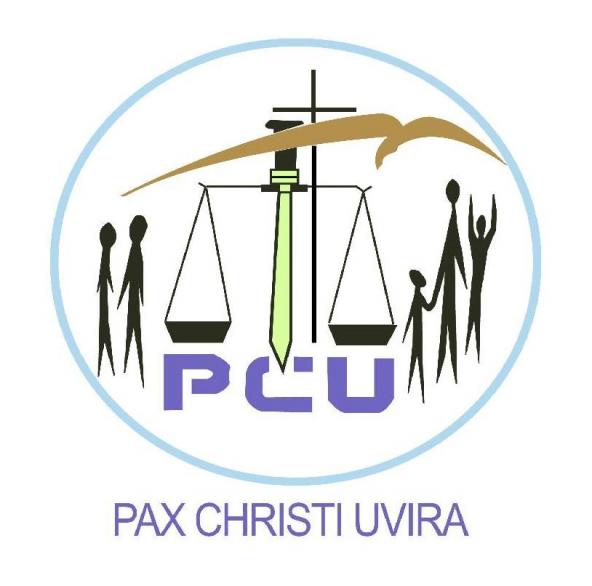
Member(s)
Pax Christi Uvira asbl
on 30 April 2020
Pax Christi Uvira is a non-profit association (asbl) created in 2003 in Uvira (Diocese of Uvira) in the province of South Kivu, in the east of the Democratic Republic of Congo. It joins the World Catholic Movement for Peace, PAX CHRISTI INTERNATIONAL, as a local group. It is an NGO under Congolese law (with legal […]
Democratic Republic of the Congo

Member(s)
Free Mumia! French Support Group
on 30 April 2020
Founded in 1995, the French collective “Libérons Mumia” brings together about a hundred organisations and public authorities: human rights associations, trade unions, political parties, local and regional collectives and local authorities. His objective is to obtain a new trial allowing the Black American journalist Mumia to defend his innocence and regain his freedom. Mumia Abu-Jamal […]
France

Member(s)
Coalition marocaine contre la peine de mort
on 30 April 2020
The Moroccan Coalition Against the Death Penalty (CMCPM) brings together seven NGOs: -the Moroccan Prison Observatory, -the Moroccan Human Rights Association, -the Moroccan Forum for Truth and Justice, -the Moroccan Organisation for Human Rights, -the Association of Lawyers’ Bars in Morocco, -Amnesty International – Moroccan Section and -the Centre for People’s Rights. Its objectives are […]
Morocco

Member(s)
Harm Reduction International
on 30 April 2020
Harm Reduction International is a leading NGO dedicated to reducing the negative health, social and legal impacts of drug use and drug policy. We promote the rights of people who use drugs and their communities through research and advocacy to help achieve a world where drug policies and laws contribute to healthier, safer societies. Since […]
United Kingdom

Member(s)
Prison Insider
on 30 April 2020
Prison Insider is a French independent NGO. Prison Insider’s main mission is to raise awareness about the conditions of detention and to promote the rights and dignity of people deprived of liberty, everywhere in the world. To reach its aims, the organisation primarily operates an information website. Prison Insider’s vocation is to make available and […]
France
Member(s)
Legal Awareness Watch (LAW)
on 30 April 2020
Legal Awareness Watch (LAW) is a nonpartisan, non-profitable NGO registered under law since 1999, holding registration number 1388. Since its creation, LAW has been advocating, and raising awareness in Pakistan on human rights of prisoners in 104 Pakistani prisons i.e. the right to vote, right to dignity, right to life etc. Apart from the promotion […]
Pakistan
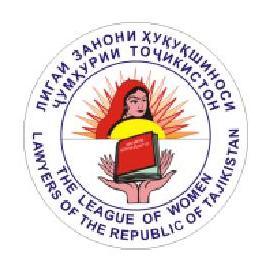
Member(s)
League of Women Lawyers of Tajikistan
on 30 April 2020
The League of Women Lawyers of Tajikistan aims at improving the legal consciousness of citizens of the Republic of Tajikistan, the protection of civil, social, economic and cultural rights of women in Tajikistan, gender equality, improving women’s status in society lawyer, as well as assisting in the preparation of legal training among young girls. League […]
Tajikistan
Member(s)
Save Anthony
on 30 April 2020
Save Anthony is a charity registered under the 1901 French law. It is designed to promote the story and finance the privately retained legal team of Anthony Mungin, sentenced to death and incarcerated at the Union Correctional Institution in Raiford, Florida (USA) since February 23rd, 1993. Anthony Mungin has always maintained his innocence for the […]
France

Member(s)
ACAT France
on 30 April 2020
ACAT-France – Action by Christians for the Abolition of Torture – is a human rights NGO that campaigns for the abolition of torture and the death penalty, and defends the right to asylum. Founded in 1974, ACAT-France has 28,000 members, including nearly 6,000 supporters and a team of 25 professionals working in its national secretariat. […]
France

Member(s)
Ville de Braine-l’Alleud
on 30 April 2020
The town of Brain-l’Alleud is located in Brabant wallon in the Hain valley, about twenty kilometres from Brussels. It has 37,000 inhabitants. Previously the site of the Battle of Waterloo in 1815, today the town welcomes much more peaceful activities, including a large number of NGOS and in particular an Amnesty International group and the […]
Belgium
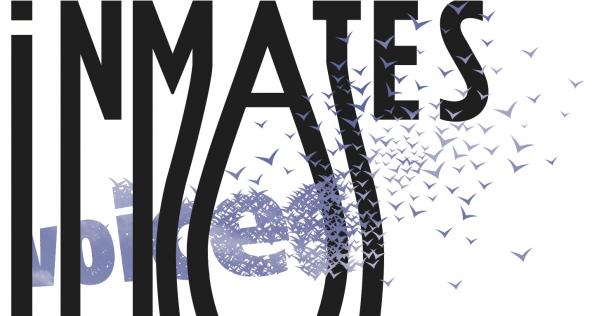
Member(s)
Inmates’Voices
on 30 April 2020
Switzerland
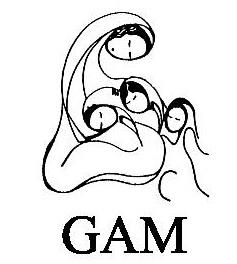
Member(s)
Grupo de Apoyo Mutuo (GAM)
on 30 April 2020
Mandate and goals: Organization of relatives of missing persons illegally detained which works for justice, investigating past cases, opening legal proceedings against the national system and the human rights system. Kind of actions: We work for justice, for the strengthening of the institutions linked to the criminal investigation and against the death penalty. Actions aiming […]
Guatemala
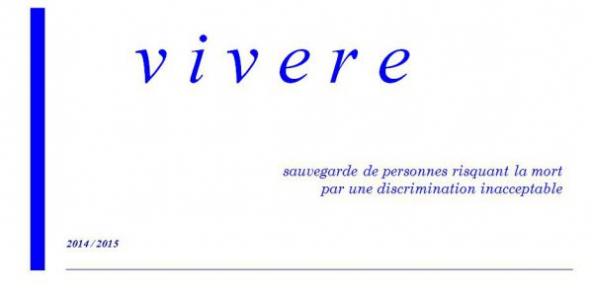
Member(s)
Vivere
on 30 April 2020
Switzerland
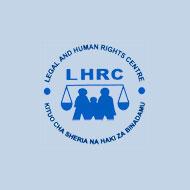
Member(s)
Legal and Human Rights Centre (LHRC)
on 30 April 2020
The Legal and Human Rights Centre (LHRC) is registered as a private, non-governmental, non-partisan and non-profit making organization based in Tanzania, East Africa. The LHRC works to create legal and human rights awareness among the public, in particular the underprivileged section of the society of Tanzania, through legal and civic education, provision of legal aid, […]
United Republic of Tanzania
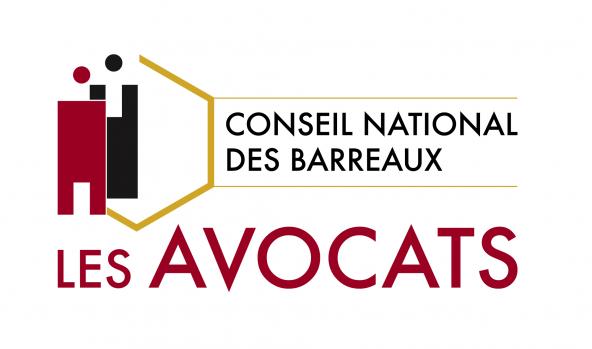
Member(s)
Conseil national des barreaux
on 30 April 2020
France
Member(s)
Kenya Human Rights Commission
on 30 April 2020
Kenya

Member(s)
Città di Reggio Emilia
on 30 April 2020
For a long time, the city of Reggio Emilia has been proud of its strong vocation for the struggle in defense of Human Rights, which is supported by the commitment of the entire community. An example is that, in order to strengthen its contribution in the struggle against apartheid in South Africa, the city signed […]
Italy
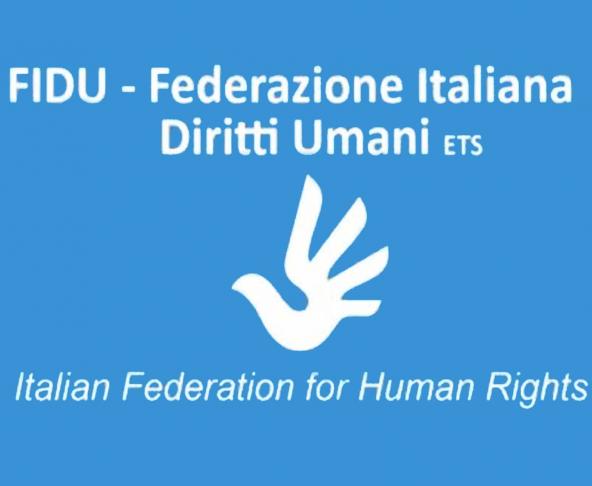
Member(s)
Italian Federation for Human Rights (FIDU)
on 30 April 2020
Active since 1987 as Italian Helsinki Committee, FIDU promotes the protection of human rights as enshrined in the Universal Declaration of Human Rights of 1948, the International Covenant on Civil and Political Rights and the International Covenant on Economic, Social in other relevant international documents. FIDU therefore intends to work to spread the knowledge of […]
Italy

Member(s)
Project 39A
on 13 September 2022
Project 39A is a criminal justice initiative, based in the National Law University, Delhi – a prestigious public university in New Delhi. Inspired by Article 39-A of the Indian Constitution, Project 39A’s work furthers the intertwined values of equal justice and equal opportunity. Project 39A uses empirical research to re-examine policies on various criminal justice […]
2022
India
Document(s)
A Comparative Analysis of Capital Punishment: Statutes, Policies, Frequencies, and Public Attitudes the World Over
By Dagny Dlaskovich / Rita Simon / Lexington Books, on 1 January 2002
2002
Book
More details See the document
A Comparative Analysis of Capital Punishment provides a concise and detailed history of the death penalty. Incorporating and synthesizing public opinion data and empirical studies, Simon and Blaskovich’s work compares, across societies, the types of offenses punishable by death, the level of public support for the death penalty, the forms the penalty takes, and the categories of persons exempt from punishment.
- Document type Book
- Themes list Public opinion,
Document(s)
Life After Sentence of Death: What Becomes of Individuals Under Sentence of Death After Capital Punishment Legislation is Repealed or Invalidated
By James R. Acker, Brian W. Stull, on 25 July 2021
2021
Academic report
United States
More details See the document
More than 2500 individuals are now under sentence of death in the United States. At the same time, multiple indicators—public opinion polls, legislative repeal and judicial invalidation of deathpenalty laws, the reduction in new death sentences, and infrequency of executions—suggest that support for capital punishment has significantly eroded. As jurisdictions abandon or consider eliminating the death-penalty, the fate of prisoners on death row—whether their death sentences, valid when imposed, should be carried out or whether these individuals should instead be spared execution—looms as contentious political and legal issues, fraught with complex philosophical, penological, and constitutional questions. This article presents a detailed account of what has happened historically to persons awaiting execution, principally within the United States but also internationally, at the time capital-punishment legislation is repealed or invalidated (either completely, or with respect to a narrow category of crimes or persons). Our analysis has uncovered no instances of executions being carried out under those circumstances. This finding has important policy implications and is directly relevant to the Supreme Court’s Eighth Amendment jurisprudence, which relies on execution practices as one measure to help inform the Court about whether the death penalty is a cruel and unusual punishment.
- Document type Academic report
- Countries list United States
Document(s)
Is the Death Penalty an Asian Value?
By Sangmin Bae / Asian Affairs, on 1 January 2008
2008
Article
More details See the document
Since World War, a growing number of countries around the world have joinedthe movement to abolish capital punishment. Asia remains the exception and ithas been argued by some Asian leaders that the abolition of capital punishmentis in conflict with “Asian values” and that the abolitionist argument constitutesan illegitimate interference in what is essentially a domestic concern. Thisarticle reviews the death penalty in the context of international human rightsand examines the Asian values argument. Reviewing the teachings of Confuciusand other Asian philosophers, it suggests that the ongoing use of the deathpenalty in Asia is not rooted in intrinsic cultural traditions, but in fact is tiedto internal political decisions. The Asian values argument has been largelyused as a means to maintain political legitimacy, and not anything inherent tocultural factors.
- Document type Article
- Themes list Networks,
Document(s)
The European Union and the Abolition of the Death Penalty
By Christan Behrmann and Jon Yorke / Pace University, School of Law, on 1 January 2013
2013
Academic report
More details See the document
This article investigates how the EU has evolved its abolitionist position. It analyzes the development of the region’s internal policy beginning in the European Parliament, to the rejection of the punishment being mandated as a Treaty provision, which evolves into anintegral component of the external human rights project. The EU has now formulated technical bilateral and multilateral initiatives to promote abolition worldwide. This is most clearly evidenced in the EU playing an important role in the 2007 United Nations General Assembly Resolution on the moratorium on the use of the death penalty, and the strengthening of the resolution in 2008, 2010, and 2012. This article demonstrates that the EU’s contribution to the abolition of the deathpenalty is a recognizable success story of human rights, and it is one aspect of the regions’ policies that was rewarded in 2012 with the Nobel Peace Prize.
- Document type Academic report
- Themes list Trend Towards Abolition,
Document(s)
Reducing Facial Stereotype Bias in Consequential Social Judgments: Intervention Success With White Male Faces
By Youngki Hong, Kao-Wei Chua, & Jonathan B. Freeman, Columbia University, on 25 January 2024
2024
Article
United States
More details See the document
Published on December 18, 2023.
Initial impressions of others based on facial appearances are often inaccurate yet can lead to dire outcomes. Across four studies, adult participants underwent a counterstereotype training to reduce their reliance on facial appearance in consequential social judgments of White male faces. In Studies 1 and 2, trustworthiness and sentencing judgments among control participants predicted whether real-world inmates were sentenced to death versus life in prison, but these relationships were diminished among trained participants. In Study 3, a sequential priming paradigm demonstrated that the training was able to abolish the relationship between even automatically and implicitly perceived trustworthiness and the inmates’ life-or-death sentences. Study 4 extended these results to realistic decision-making, showing that training reduced the impact of facial trustworthiness on sentencing decisions even in the presence of decision-relevant information. Overall, our findings suggest that a counterstereotype intervention can mitigate the potentially harmful effects of relying on facial appearance in consequential social judgments.
- Document type Article
- Countries list United States
Document(s)
Bylaws of the World Coalition Against the Death Penalty 2023
By World Coalition Against the Death Penalty, on 22 August 2023
2023
World Coalition
Trend Towards Abolition
frMore details Download [ pdf - 146 Ko ]
- Document type World Coalition
- Themes list Trend Towards Abolition
- Available languages Statuts de la Coalition mondiale contre la peine de mort 2023
Document(s)
INSECURITY REVEALED: Voices Against the Death Penalty
By World Coalition Against the Death Penalty, on 6 August 2024
2024
Campaigning
World Coalition
frMore details Download [ pdf - 1313 Ko ]
- Document type Campaigning / World Coalition
- Available languages L'INSÉCURITÉ RÉVÉLÉE : Voix contre la peine de mort
Document(s)
Bylaws 2021
By World Coalition Against the Death Penalty, on 9 September 2021
2021
World Coalition
frMore details Download [ pdf - 97 Ko ]
Bylaws of the World Coalition Against the Death Penalty As Amended by the 18 June 2021 General Assembly
- Document type World Coalition
- Available languages Statuts 2021

